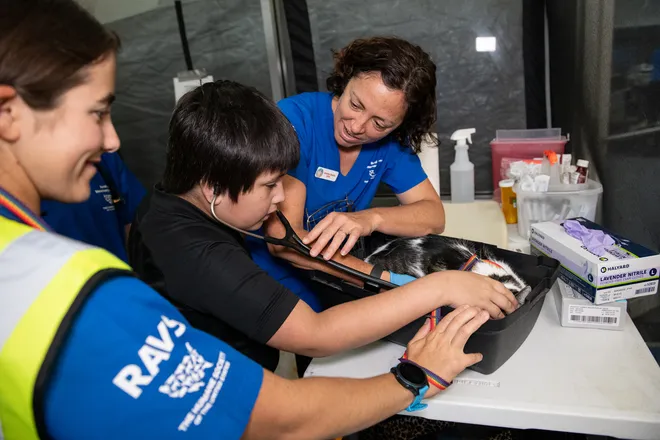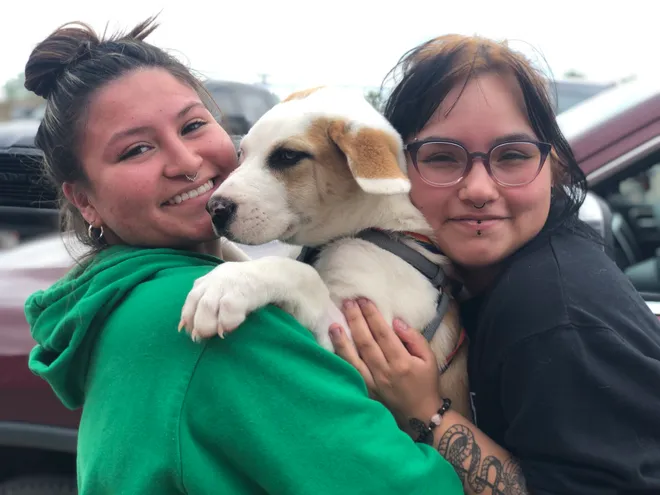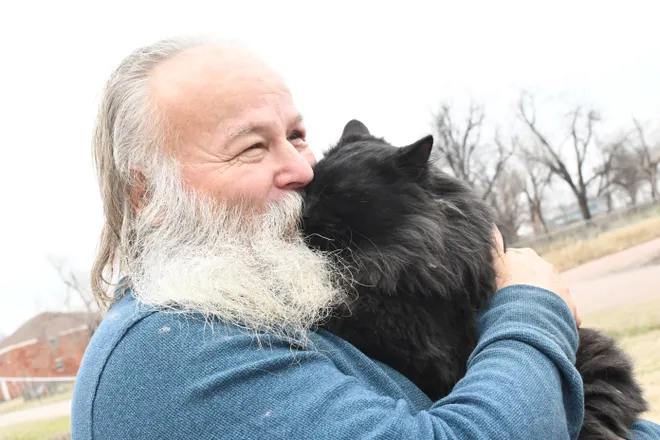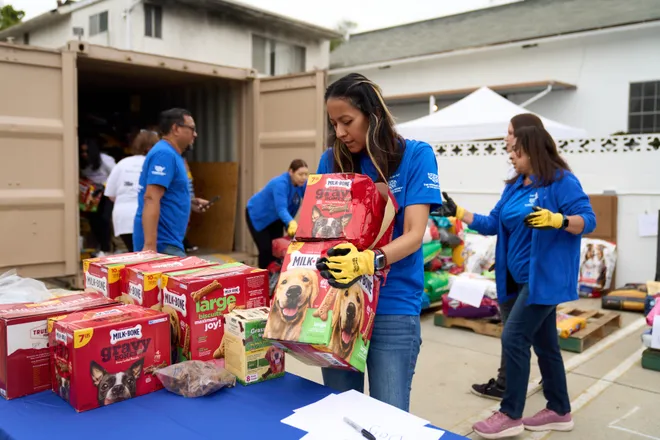Veterinary care, animal hospitals are more scarce. That's bad for pets (and their owners)
Pets are part of our families.
That's how 97% of pet owners in the U.S. feel, according to Pew Research Center, which also found a majority of Americans, 62%, own at least one pet.
They're our companions and our friends, showing up at the door with wagging tails and snuggling in our lap with a deep purr, giving us unconditional love and making us smile just by being themselves. And like human family members, they need love, nourishment, socialization − and health care.
But as pet ownership numbers continue to skyrocket across the U.S., the number of vets has lagged well behind. Advocates fear there soon won't be enough veterinary doctors to give our fur babies vaccines, mend their injuries, treat their illnesses and even help us say goodbye when the time comes.
"We know there's a shortage, and it's worsening," said Barbara Hodges, a veterinarian who is director of advocacy and outreach for the Humane Society of the United States.
Black school's efforts:Historically Black college hopes to be second to train veterinarians. Why it matters.

What is causing a veterinary shortage?
According to a report by Mars Veterinary Health, which has a network of 3,000 veterinary clinics worldwide, the U.S. will need as many as 55,000 additional veterinarians by 2030 to meet the increasing need for companion animals' health care. This comes as spending on pets' health care is expected to increase 3% to 4% past the rate of inflation over the next decade or so.
Mars Veterinary Health estimates that by 2030, there may be a shortage of as many as 24,000 companion animal veterinarians, even accounting for students who will become vets over the next decade.
There are a few factors driving the shortage, said Hodges, a veterinarian since 2001.
More people own pets than ever before, fueled in part by the forced isolation of the pandemic and in part by the rise of remote and hybrid work. But the number of veterinarians is holding steady ‒ meaning companion care vets are seeing more animals and are busier than ever.
Love your kitty?Here and meow: Why being a cat lady is now cool (Just ask Taylor Swift)
"There are more constraints and pressures," Hodges said. "They have to work longer hours or see more patients; work-life balance is a big issue. So some veterinarians are leaving the profession, changing how they work or shifting to part-time work."
Becoming a veterinarian takes time: four years of undergraduate education and an additional four years of veterinary school. Eight years' college tuition means some graduates enter the workforce with a substantial student loan burden.
That can delay their ability to open new, independent practices. Some choose disciplines with a better work-life balance, such as research, product development, teaching or pharmaceuticals. And, much like human health care, veterinary medicine has become more specialized, so there aren't many general practice vets.

What is a 'veterinary desert'?
A study by the American Veterinary Medical Association identified so-called "veterinary deserts," using criteria including accessibility (such as transportation and distance), affordability (the pet owner's income level compared with the costs of care in their area) and availability (how many providers are in a given area).
"In a rural community, the closest veterinarian might be an hour away," said Amanda Arrington, vice president of access to care at the Humane Society of the United States. "And if you don't have transportation, accessing care can be nearly impossible."

People in urban areas might face different barriers to veterinary services, but they're no less daunting, she said.
Redlining and disinvestment have created pockets of poverty and the negative impacts of racial and economic segregation touch all aspects of peoples' lives, including their ability to access care for their pets.
Public transportation might be available for people but limited to service animals or smaller animals. And in densely populated areas, there might be longer waits for veterinary care at busy practices.
No matter where they live, elderly people or those with disabilities or mobility issues might find it difficult to travel to veterinary offices. People struggling with their own food or housing insecurity may have a hard time affording food for their pets, let alone veterinary care, grooming and other needs.
"There can be layers of barriers and challenges," Arrington said. "Rarely is someone living a one-challenge existence."

Advocates working to 'open doors' for new vets
Rena Carlson, president of the American Veterinary Medical Association, said there are a lot of students choosing to pursue veterinary medicine, a good sign given the expense and rigors of the discipline. New veterinary schools are being created, funded and accredited, as well, from Puerto Rico to Arkansas, Florida to Utah, South Carolina to Southern New Jersey.
"Nationwide, we're asking, how do we help open doors?" said Carlson, a veterinarian. "How do we guide (students) in making decisions about financing their education?" The group recognizes concerns about student debt, about providing opportunities for students from different backgrounds and about making sure graduates enter a veterinary discipline that's the best fit for them.
The AVMA is working to address those concerns and others through advocacy, scholarships and resources for vets and veterinary practices. It's also addressing burnout and increasing access to mental health care.
Pointing to a Merck-AVMA study, Carlson noted that 80% of vets and their staff believe what they do makes a positive difference in people's lives and their job satisfaction is generally high.
"They have a sense of purpose," she said.

Humane Society targets better access for pet owners
The Humane Society's Hodges said more people could access veterinary care through telemedicine. And she said vet technicians should be empowered to offer more standard care such as giving rabies vaccines and neutering male cats, freeing vets for more complex medical care.
The Humane Society offers scholarships for veterinary students and advocates for loan forgiveness programs for graduates who work for shelters, nonprofits or in underserved communities.
The Humane Society is also working to increase access in areas lacking it, Arrington and Hodges said. Its Pets for Life and Rural Area Veterinary Services initiatives seek to address inequities in access to care through outreach, advocacy, free and low-cost veterinary care, free pet supplies and other services. Pets for Life partners with organizations in 65 urban and rural communities and tribal nations across the country.
Vet bills soar:A big pet peeve: Rising costs of vet care bite into owners' budgets
"I hope more people will realize how important access to care is," Arrington said. "It's truly one of the defining issues of pet care. Pets mean so much to us; they are part of our families and everyone should be able to enjoy that love without being limited by geography or income."
Contact Phaedra Trethan by email at ptrethan@usatoday.com, on X (formerly Twitter) @wordsbyphaedra, or on Threads @by_phaedra.
Disclaimer: The copyright of this article belongs to the original author. Reposting this article is solely for the purpose of information dissemination and does not constitute any investment advice. If there is any infringement, please contact us immediately. We will make corrections or deletions as necessary. Thank you.





